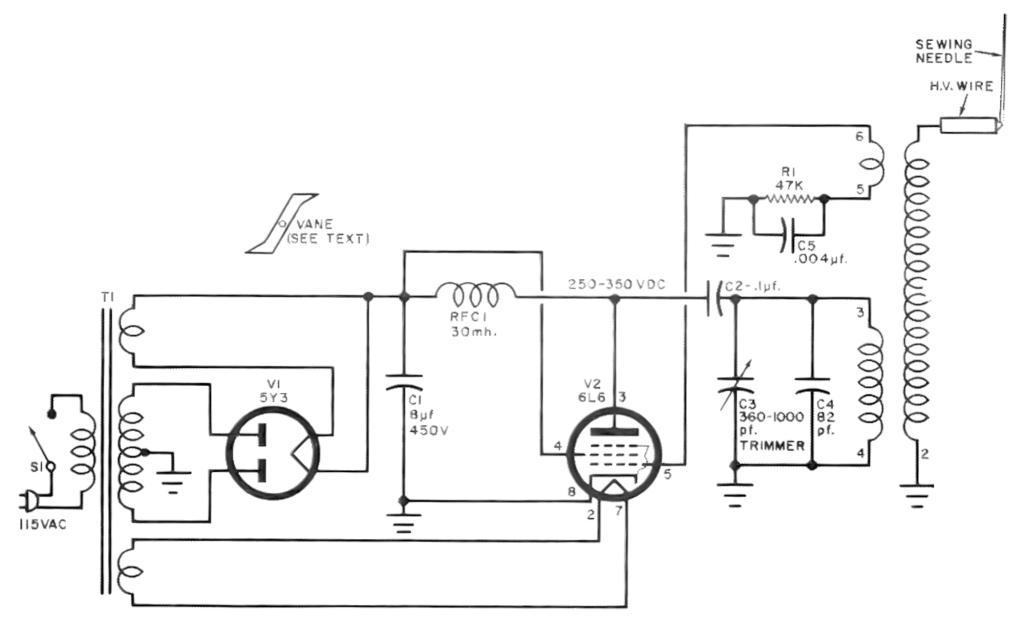TCBA Volume 7 - Issue 1
Page 10 of 18
Parts List
- C1 - 8.0-µf., 450-volt electrolytic capacitor
- C2 - 0.1-µf., 600-volt molded capacitor
- C3 - 360-1000 pf. trimmer capacitor
- C4 - 82-pf., 1.6-kv. ceramic capacitor - see text
- C5 - 0.004-uf., 600-volt mica capacitor
- R1 - 47,000-ohm. 1/2-watt resistor
- RFC1 - 30-mh., 100-ma. r.f. choke (J. W. Miller 692 or equivalent)
- S1 - S.p.s.t. toggle switch
- T1 - Power transformer: primary, 117 volts a.c.; secondaries, 500 volts. CT, 5 volts at 2 amperes, and 6.3 volts at 2.5 amperes (Thordarson 24R09U or equivalent)
- V1 - 5Y3 tube
- V2 - 6L6 tube - see text
- 1 - High-voltage coil (J. W. Miller 4526 - sec text)
- 1 - Metal chassis (Premier ACH-404 or equivalent)
- Misc. - Tube sockets, wire, solder, etc.
After double-checking your wiring, turn on the a.c. power and permit the two tubes to warm up. Take an insulated screwdriver - something like a long alignment tool - and adjust C3 for a brush discharge from the needle point. If you do not have enough range in C3 to tune through the maximum discharge, change the value of C4 - add more capacitance at C4 if the plates of C3 are tightly meshed; use less if C3's are too loose. You can set C3 for maximum discharge by listening to the sound of the brush effect - tune for a clean high-pitched hiss and not a sputtering sound.
The brush discharge from Li'l TC will be about 1" in height and can be seen best in a dimly lighted room. Actually, a brush corona will appear at any sharp edge on the output lead, so be careful to round out the soldered connections between the eye of the needle and the shortened h.v. lead.
Ionic Propulsion Vane. Probably the most impressive demonstration of a Tesla coil is the ionic propulsion vane. You can make one for Li'l TC by cutting out the general pattern shown in the diagram above.
Make the over-all length of the vane about 1" to 1 1/2". Cut the vane from aluminum foil and puncture the center so that the vane is balanced. Use one of your wife's extra beads as a bearing by slipping it on the upright needle. Then drop the vane over the needle so that it rests on the bead and can rotate freely. Put a piece of cork or rubber on the tip of the needle to stop the vane from picking up so much speed that it spins right off the needle.
The photograph on the first page of this article is a two-second time exposure (slightly enlarged) showing what the brush corona discharge and rotating vane should look like.

